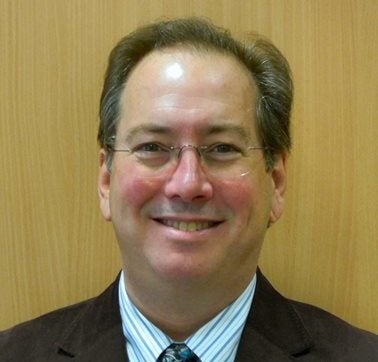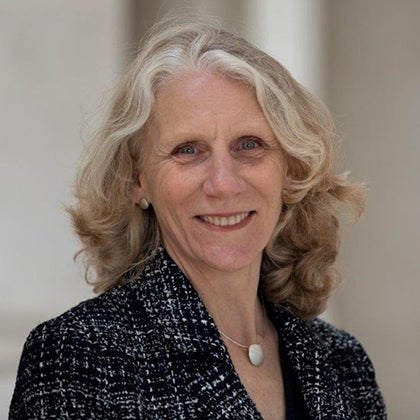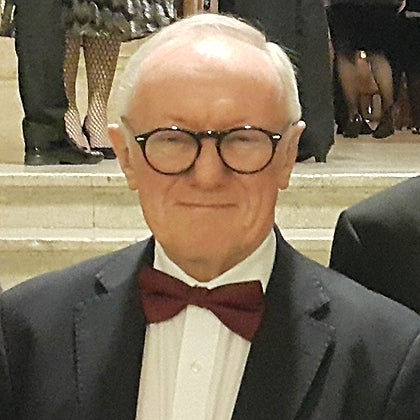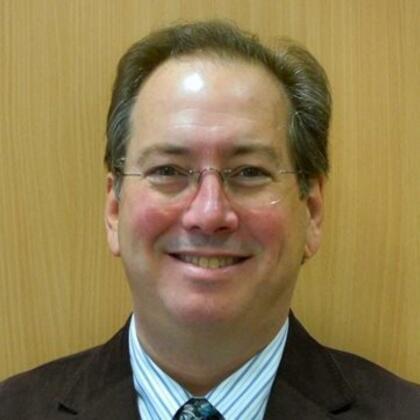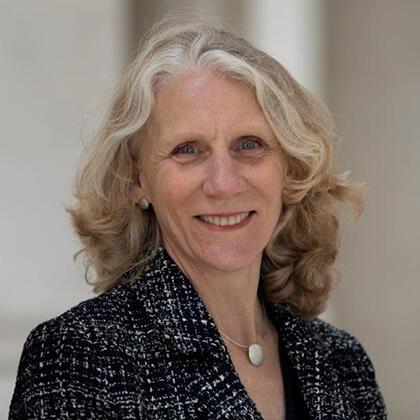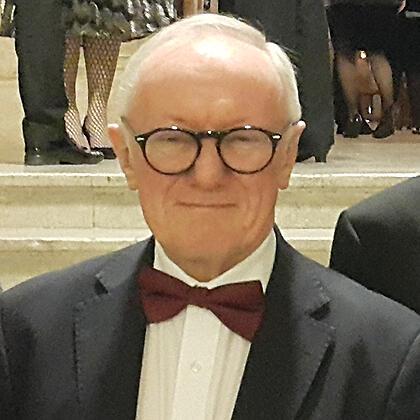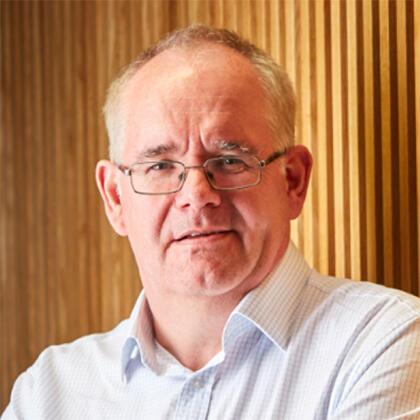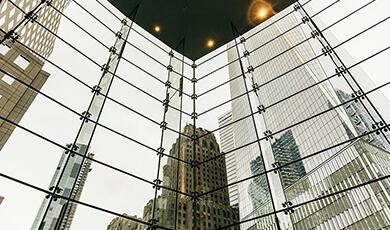Connect To Prosper – The Power Of Networks
Share
- Details
- Transcript
- Audio
- Downloads
- Extra Reading
An annual talk delivered by the President of Gresham College, The Rt Hon the Lord Mayor of the City of London.
Cities are networked networks of connectivity and information sharing. They create, often indirectly, communication, transportation, commercial, and intellectual networks. For the City of London, expanding and changing networks develop its strengths. Over 40 learned societies, 70 universities, and 130 research institutes surround the City of London, creating a network of knowledge connections among science, technology, engineering, arts, mathematics, and finance.
In this annual lecture, Professor Michael Mainelli, President of Gresham College, Honorary Life Fellow, and Lord Mayor of the City of London, will draw upon his more than two decades of research into smart and financial centres worldwide.
He will explain how the 2023-2024 Mayoral theme: “Connect To Prosper”, with its emphasis on multi-disciplinary networks, hopes to link forces to advance, just a bit, a few solutions to global problems.
After the talk there will be a discussion with Professor Julia Black, Professor Mark Birkin and Professor Michael Batty.
Download Transcript
Connect to Prosper: The Power of Networks
Professor Michael Mainelli
Lord Mayor of the City of London
20 November 2023
My theme for this evening is ‘Connect to Prosper – The Power of Networks’. I want to explore network theory and why it underpins my 695th Lord Mayor’s theme, celebrating the Knowledge Miles of our Square mile, the World’s Coffee House.
Imagine you are in a coffee house, surrounded by people from different backgrounds, professions, and interests. You strike up a conversation with a stranger and discover that you have something in common. Maybe you share a hobby, a passion, or a problem. You exchange ideas, opinions, and contacts. You feel inspired, energised, and connected. You come up with a solution to some global problem inspired by the other people in the coffee house.
A little while later after dinner, you drink a glass of port and dream of solving the world’s problems just before bed. When you wake up to the smell of coffee you begin doing the work. Congratulations, you have just experienced the power of network theory!
There are numerous books on a single theme, cod, salt, nutmeg, all viewing the world as a network around one subject. I’ve often wanted to write a book on ledgers of all sorts, yes I’m that exciting, but the ultimate connective book might be the book of networks. It could start with the intellectual networks and coffee houses from 1660, the Royal Society and the Enlightenment, leading to the technology networks of telegraphs, telephones, electricity transmission and computers. We move rapidly to an age where everything will be networked.
We shall touch swiftly on six points ahead of our group discussion:
• What are networks?
• Why do networks matter?
• Emergent properties of networks
• London as a network
• The network of global cities
• ‘Connect To Prosper’
What are networks?
‘Networks are systems of interconnected things’. As simple as that. ‘Networks are systems of interconnected things’, but the concept has great depth. Networks can be found in various domains and contexts, such as biology, sociology, ecology, chemistry, and physics. Some examples of networks are:
• Neural networks: networks of neurons that are connected by synapses, which are the junctions where signals are transmitted between neurons. Neural networks can be used to study how we process information and perform cognitive functions.
• Social networks: networks of people who are connected by social ties, such as friendship, kinship, or collaboration. Social networks can examine how people communicate, influence, and cooperate with each other.
• Food webs: networks of organisms that are connected by feeding relationships, such as predator-prey or producer-consumer. Food webs can be used to study how energy and nutrients flow through an ecosystem and how it affects the population dynamics and biodiversity.
• Molecular networks: networks of molecules that are connected by chemical bonds, such as covalent, ionic, or hydrogen bonds. Molecular networks can examine how molecules interact and form complex structures and substances.
You can graph networks, and thus network theory is a subset of graph theory. Euler's solution of the Seven Bridges of Königsberg problem was an early proof in the theory of networks. The bases of all networks are nodes and links. Some people prefer to refer to nodes as vertices and links as edges, still the same thing, dots, and lines.
From the start this looks extremely simply, a series of dots connected by lines. So, let’s try and connect some dots to share some of the options:
1. Typically, nodes are objects such as cells, people, animals, or atoms. nodes can have one or many connections. Nodes can be restricted to a limited number of connections. Nodes can be points, or have size, or have many sizes. Nodes can be abstractly located, or have pre-determined coordinates in two dimensions, or many.
2. Links can be one-way, two-way, or both. Links can be thicker or thinner reflecting differing strengths or capacities.
3. The network can require some nodes to be linked, all nodes to be linked, all nodes to be linked to each other.
4. Nodes can restrict what they do and don’t accept from links. Links can restrict what they send from node to node, and how much they will send from node to node.
When designing a network, there is a constant tension of what role should be given to nodes and what to links. Just to make your head spin, you can invert networks, making all nodes links and vice versa. In their very underlying structure networks exhibit the tension between competition and cooperation over control and resources.
Why do networks matter?
Networks matter because they structure nodal connections. Without a structure, nodes would just pile beside or on top of one another. Links give nodes a structure, for example restricting which node can talk to another node, and so on. Information, resources, objects, flow according to the structure of the links.
You can get quite meta-physical about networks. Classification starts with division - “‘Let there be light,’ and there was light … and he separated the light from the darkness” calling the light ‘day,’ and the darkness ‘night.’ Thus, we separate nodes from links.
As you design networks, you rapidly realise they are complex; separations aren’t that crisp and clear. Maps are ambiguous. Cities can be defined by defensive walls, planning permission authorities, taxation, worker location, or dependence on a host of infrastructure, air, land, & sea transportation, water, energy, waste, communications. Obviously, an English city has a cathedral, except that London has two notable cities, Westminster, and our City.
If a city is a node and a railway a link, what is the boundary of a city? Many cities - London and New York spring immediately to mind - have burst their boundaries and expanded by swallowing older villages and boroughs. We have twin cities such as Budapest or the metropolitan area of Minneapolis-St Paul.
Of course, the railway link is simple, not. When building a computer simulation of British Rail in the 1980s, we had trains that started at Birmingham for London, gaining and losing coaches along the way, gaining and losing engines along the way. We had a circular train in the Midlands that never had the same engines or coaches in its daily loop. Our solution was to banish the word ‘train’ and just specify a set of engines and coaches from station to station. Of course, a station is simple, not. Many stations had multiple railways.
Philosopher Ludwig Wittgenstein tried to apply exactness to language and its relationships with real objects. Later he abandoned this view. Words are imprecise, fuzzy. Their meaning lies in the way people connect them to achieve goals. A quantum calculus, ZX, states that “only connectivity matters”[1].
Similarly, network theory tries to organise fuzzy situations. Once we have expressed a system of interconnected things in a network diagram or simulation, we can begin to measure it. People have used network theory to analyse any number of things, from why groups of people do or don’t work together, to how protest signs identify sister radical organisations, to political jokes about Obama, Trump, and Biden.
We also have creative ways of measuring networks, e.g., centrality, breadth, depth, volatility, utilisation, stress, round trip time, latency, jitter, gradients, and fractal dimensions. Google’s original search engine was based on a simple network measurement – “PageRank works by counting the number and quality of links to a page to determine a rough estimate of how important the website is. The underlying assumption is that more important websites are likely to receive more links from other websites.”[2]
Some fun uses of network analysis began with Hungarian Frigyes Karinthy in 1929 postulating “six degrees of separation” in a short story, leading on to Erdős numbers, the distance to the famous Hungarian mathematician, to the website SixDegrees.com, and later social link networks such as LinkedIn.
One 2015 MIT network analysis I loved identified people who were harbingers of failure, whose very purchase of products indicated a product’s likely flop. MIT marketing professor Catherine Tucker explains, “If you’re the kind of person who bought something that really didn’t resonate with the market, say, coffee-flavored Coca-Cola, then that also means you’re more likely to buy a type of toothpaste or laundry detergent that fails to resonate with the market.”
Dynamic network theory studies how networks change over time. Dynamic network theory proposes eight social network roles people can play: goal striving, system supporting, goal preventing, system negating, observing, system reacting, goal reacting, and system ignoring[3]. Applying these eight roles to politics, for example apathetic voters, dynamic network theorists analyse the interactions and preferences of social media users for marketing, advertising, and personalisation; for instance, the diffusion of information and opinions on Twitter during US presidential elections.
Emergent properties of networks
Emergent property is a pompous name for ‘surprise!’. Networks often surprise us. Who would have thought that a bunch of neurons connected by synapses would be conscious? As a humorous example of an emergent property, my daughter Xenia had a friend who created a WhatsApp group for her own surprise birthday party, and then withdrew from the group letting her friends move on to ‘surprise’ her later.
From networks often emerges unexpected order, responsiveness, reproduction, growth, regulation, evolution, and homeostasis. When a network is greater than the sum of its parts, it tends to show emergent properties.
Networks tend to be coordinated, not controlled. Complexity emerges from networks. Bela Suki argues that “biological complexity as we see it today cannot have evolved without networks.”[4]
Network systems have resilience, able to maintain stability and return to original conditions aftershocks. Ross Ashby, a psychiatric cyberneticist, coined Ashby’s Law, that for a system to survive and remain stable, it must match the complexity, diversity, and variety of its environment. The internet was designed to be resilient, a communications network to withstand nuclear war. Resilience comes from diversity and redundancy, lots of variety within the links and nodes, and lots of links to get round interference or destruction. Some network systems show properties of robustness, able to recover and thrive after a complete change in their environment - raccoons, Japanese knotweed, or Irish pubs in every city on the planet.
In line with R V Jones’s Crabtree’s Bludgeon: ‘no set of mutually inconsistent observations can exist for which some human intellect cannot conceive a coherent explanation, however contrived.” My BT research friend Dr Robert Hercock once said that we already know what it’s like to live with AI, it’s like living with a small dog. When we see a complex network in action, we often refer to it in human terms, we anthropomorphise it – “the tractor, he seems cranky this morning”, “the boat, she seems to handle lightly today”, “the system is against me”.
Networks are not unalloyed goods. Ian O Angell, in Science’s First Mistake: Delusions In Pursuit Of Theory, concludes that so-called intellectual 'rigour' is merely reinforced self-reference, imposed by the power that comes with the utility delivered by the self-reference. Networks are inherently self-referential, and we need to be cautious about observing what we want to see, or confusing causation with correlation.
There are limits. All that inter-communication consumes energy. Dyson spheres were first posited in the 1937 novel Star Maker by Olaf Stapledon, in which he described "every solar system ... surrounded by a gauze of light-traps, which focused the escaping solar energy for intelligent use". Freeman Dyson took up the idea scientifically in 1960 – and some astronomers seek evidence of artificial structures capturing much of a star’s energy to power information systems[5].
New value is created exponentially from accumulated knowledge. Some people claim that economics should no longer be about scarce resources, but about abundance. As war destroys networks, then traditional warfare to grab productive land is of less value. But there is scarcity. “What information consumes is rather obvious: it consumes the attention of its recipients. Hence a wealth of information creates a poverty of attention, and a need to allocate that attention efficiently among the overabundance of information sources that might consume it.” [Herbert A Simon (1916-2001)] We move from an economics of resources to one of attention - «L’attention est la forme de générosité la plus rare et la plus pure.» “Attention is the rarest and purest form of generosity.” [Simone Weil (1909-1943)]
Outside of biology, generative AI’s large language models, such as ChatGPT, LLaMA, or Bard, jump up non-linearly in performance as they are fed more data.
Memory is important, but expensive. This leads us to search for metrics of network decay, how can we achieve the same results more efficiently with a smaller, more efficient network? When does a network exhibit “involution”, a situation in which extra input no longer yields more output? How do we archive things, or even delete things permanently from the archive, a perennial problem for archivists who know they can’t store everything? Innovation networks are inevitably networks full of waste as they explore dead end paths in search of novelty. If we knew what the answer was we wouldn’t need innovation. Some well-trod paths introduce path dependency; we can’t move to more efficient keyboards without displacing QWERTY keyboards. Better device chargers have a lot of embedded sockets to displace before they take hold.
You’ve heard people speculate that given enough time, 1,000 monkeys on typewriters might produce the works of Shakespeare. Steve Wright muses, “If you write the word ‘monkey’ a million times, do you start to think you’re Shakespeare?” Perhaps 1,000 Shakespeare’s could produce the work of a monkey? Evolving dynamic networks need ways to incorporate more random inputs.
I recall that in the early days of the internet we hoped for ‘serendipity’. We thought the world would be a more inclusive place if we could instantly connect with an Indian farmer’s wife and discuss life with her. We never thought what the Indian farmer might think. Of course, it turns out that networks can be divisive too, polarising opinions. We still don’t know what makes a positive connection, nor whether all the various connections amount to something positive. I’d like a campaign against ‘conspiracies’ and for ‘inspiracies’, seeking positive results from connections.
London as a network
The Santa Fe Institute finds evidence of increasing returns to scale in city inventiveness and creativity. Increasing returns emerge from the fact that the value of connections rises with the number of participants in the network and show up as ‘power laws’ in the concentration of petrol stations or speed of information dissemination. Each participant connecting to the network improves their productivity markedly, while also contributing to the productivity of those already connected. A thought experiment affirms the idea of network benefits – if there were two world-wide webs, wouldn’t they be even more powerful if they were connected into one? And network dangers - might they also be more vulnerable?
Professor Geoffrey West at the Santa Fe Institute asks, "Why are large cities faster?" People in cities do actually walk faster than country folk. The Boltzmann Constant relates particle energy to temperature of a gas. Is there a Boltzmann Constant linking the energy consumption of a city to its social temperature or pulse rate?
The Gresham team once used statistics to craft the best Gresham lecture title ever, the one that would pull the biggest crowd. What we got was “London’s Century of Modern Imperial World War Music Mathematics”. Using statistics to evaluate global commercial centres is increasingly fraught too. Business travel falls, tourism rises. People work from home, development teams span the world. What endures are cities as networks of connections. Cities create, often indirectly, communication, transportation, commercial, and intellectual networks.
Increasingly, analysts are using chaos and complexity theory to explore such networks. But how do we measure tolerance, diversity, innovation, resilience? I might suggest that one measure is deal-making. Large cities are faster because people have more interactions per unit as the city scales up. In my day job, clients often plead at the end of a long day of comparative urban statistics, “please just give us one thing that will lead to a successful commercial centre”.
My simple answer is, “treat all comers fairly”. More interactions lead to more deals and more structures to prevent cheating. Structures that promote trust, clarity of contract, certainty of delivery, robust enforcement, in short, the Rule of Law. Deals pull in professional, business, and financial services. Thus professional, business, and financial services activity can serve as a good indicator of the strength of ‘deal making’ and commercial temperature of the city.
“The history of coffee houses,” said D’Israeli, “ere the invention of clubs, was that of the manners, the morals and the politics of a people.” The first coffee house in the City of London appeared, according to legend, in 1652 in St Michael’s Alley in Cornhill, run by Pasqua Rosée and partners. Coffee houses were temperance institutions, different from taverns and ale houses. “Within the walls of the coffee house there was always much noise, much clatter, much bustle, but decency was never outraged.” By 1715 there were over 2,000. They were known as Penny Universities by virtue of a standard penny for admission and acquired an appropriate ditty[6]:
So great a Universitie
I think there ne’re was any;
In which you may a Schoolar be
For spending of a Penny.
These coffee houses spawned numerous clubs and numerous business organisations, oft-cited are the London Stock Exchange and Lloyd’s of London. The networks of coffee houses created communities. Communities form when people are prepared to be indebted to one another. The links among a community are obligations. Unsurprisingly, coffee houses began to issue their own tokens, both solidifying their community and funding themselves on future coffee consumption.
The network of global cities
Global cities are a network of their own as well. In his essay “How to Get Rich” [1999], biogeographer Jared Diamond set out two principles for communities – connectivity and coopetition:
“First, the principle that really isolated groups are at a disadvantage, because most groups get most of their ideas and innovations from the outside. Second, [I also derive] the principle of intermediate fragmentation: you don’t want excessive unity and you don’t want excessive fragmentation; instead, you want your human society or business to be broken up into a number of groups which compete with each other but which also maintain relatively free communication with each other. [And those I see as the overall principles of how to organize a business and get rich.]”
Connectivity - On connectivity, I would go further, towards intensity. Coral reefs are rich in biodiversity and competition, intense interfaces between the pelagic ocean and sun-blessed inshore waters. They are the boundaries between order and chaos. Opportunities to increase the intensity of interaction should be seized. Airplanes, telecoms, bicycles, mobiles, Uber, all raise intensity, and even those much-detested electric scooters are worth a try.
Coopetition - Society has many ways of resolving problems. Many of them are neither pretty nor progressive, communism, military rule, legal prescription - the roads to serfdom. Cities have a mutual interest in showing that competitive commercial centres can cooperate and self-regulate to deliver policy solutions for societal problems such as sustainability, based on market economies.
… and I would add a third:
Deriving Order from Chaos - The Wizard of Oz sees smart cities as a super-connected, super-centralised system, in which the Mayor hides behind a green curtain, seeing all and controlling all. The Hippie Entrepreneur believes smart cities give free access wherever possible, so that a thousand innovative flowers can bloom. If cities are co-created by everybody, then great metropolises are about everyone’s contribution, and thus as much about accident as design. The haphazard and serendipitous in cities creates opportunities for positive change. I support the Hippie Entrepreneur.
“Connect to Prosper”
Over 40 learned societies, 70 universities, 130 research institutes, and 24,000 businesses surround the City of London, with a community speaking some 300 languages, creating a network of knowledge connections as much, or more, science & tech, media & culture, as finance. The City is – rightly – known for its leadership in financial and professional services, but we’re also the biggest centre for tech in the country. With a workforce that includes scientists, engineers, and technicians, as well as bankers, insurers, lawyers, accountants, and actuaries.
‘Connect to Prosper’ shines a spotlight on these other areas of strength – what I think of as the Square Mile’s “Knowledge Miles” – by hosting an online lecture series with expert talks from City figures on topics from artificial intelligence to fusion, to quantum.
Our client, the World, sat down a decade ago and hammered shared 17 big problems that need solutions, the UN Sustainable Development Goals. ‘Connect To Prosper’, with its emphasis on multi-disciplinary networks solving global problems, has a defined goal – make positive connections in aid of these SDGs.
Our Square Mile is a hub of dynamic networks that foster innovation, collaboration, and diversity. The coffee house culture of the 17th and 18th centuries spawned the London Stock Exchange and Lloyd’s. The ‘New Learning’ and ‘Natural Philosophy’ gatherings of Gresham College and the Royal Society spawned science, engineering, and the industrial revolution.
The challenges and opportunities of dynamic networks in the 21st century include, how can we:
• balance competition and cooperation in dynamic networks?
• foster creativity and resilience in dynamic networks?
• leverage dynamic networks to solve global problems, such as climate change, poverty, or health?
Conclusion
Tonight, I am joined by three eminent panelists who will provide a response to my remarks and engage with you on the topic of networks:
• Professor Michael Batty, an expert on modelling cities to improve planning;
• Professor Julia Black, who is particularly interested in regulatory aspects of networks;
• Professor Mark Birkin, with long-standing interests in urban and regional systems.
Dynamic network theory is a powerful tool that can help us understand and improve our social systems. It can also inspire us to create and innovate, to collaborate and compete, and to connect and prosper. Our Square Mile is a living example of dynamic network theory in action, and we are all part of it. We are the natural hub to provide global solutions. So, let’s make the most of it. Let’s be curious, open-minded, and tolerant. Let’s be dynamic networkers.
I look forward to our discussion.
Thank you.
© Professor Michael Mainelli 2023
References and Further Reading
- https://www.researchgate.net/publication/290538890_On_politicians_in_big_women's_sunglasses_driving_buses_with_their_feet_in_mouths_Late-night_political_humour_and_conceptual_integration_theory
- https://news.mit.edu/2015/harbinger-failure-consumers-unpopular-products-1223
- https://www.experimental-history.com/p/science-is-a-strong-link-problem
- https://royalsocietypublishing.org/doi/10.1098/rstb.2011.0213
© Professor Michael Mainelli 2023
[1] https://zxcalculus.com/intro.html
[2] https://web.archive.org/web/20111104131332/https://www.google.com/competition/howgooglesearchworks.html
[3] https://www.tc.columbia.edu/dnl/theory/
[4] https://www.frontiersin.org/articles/10.3389/fphys.2012.00094/full
[5] https://www.newscientist.com/article/mg24933190-800-dyson-spheres-how-to-spot-an-alien-megastructure/
[6] https://ukersallaboutcoffee.wordpress.com/chapter10/
References and Further Reading
- https://www.researchgate.net/publication/290538890_On_politicians_in_big_women's_sunglasses_driving_buses_with_their_feet_in_mouths_Late-night_political_humour_and_conceptual_integration_theory
- https://news.mit.edu/2015/harbinger-failure-consumers-unpopular-products-1223
- https://www.experimental-history.com/p/science-is-a-strong-link-problem
- https://royalsocietypublishing.org/doi/10.1098/rstb.2011.0213
© Professor Michael Mainelli 2023
[1] https://zxcalculus.com/intro.html
[2] https://web.archive.org/web/20111104131332/https://www.google.com/competition/howgooglesearchworks.html
[3] https://www.tc.columbia.edu/dnl/theory/
[4] https://www.frontiersin.org/articles/10.3389/fphys.2012.00094/full
[5] https://www.newscientist.com/article/mg24933190-800-dyson-spheres-how-to-spot-an-alien-megastructure/
[6] https://ukersallaboutcoffee.wordpress.com/chapter10/
Part of:
This event was on Mon, 20 Nov 2023
Support Gresham
Gresham College has offered an outstanding education to the public free of charge for over 400 years. Today, Gresham plays an important role in fostering a love of learning and a greater understanding of ourselves and the world around us. Your donation will help to widen our reach and to broaden our audience, allowing more people to benefit from a high-quality education from some of the brightest minds.


 Login
Login
